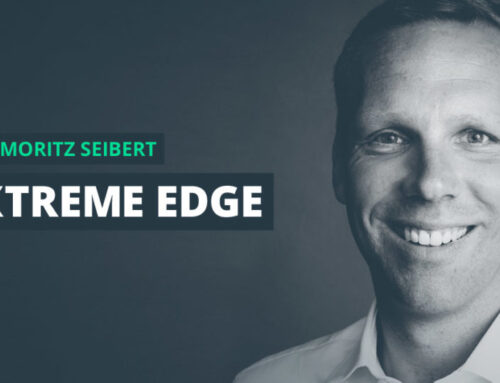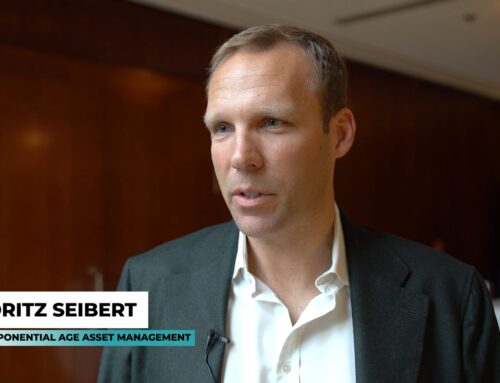Investors do not necessarily lower their risk by reducing the volatility expectation of their returns. That’s because volatility and risk are two very separate matters.
When investors are too keen on obtaining a smooth “all weather” return stream, odds are that at some point they will end up with the opposite. That opposite is negative skew and negative return convexity.
Trend following traders tend to be on the other side of that return distribution, realizing positive skew and positive return convexity.
Kahneman and Tversky’s Prospect Theory shows that most investors feel losses stronger than gains of equal magnitude, which is one of the reasons why high volatility strategies are very much out of favor with investors. Smooth return streams, in contrast, are very much in favor — a fact that’s especially true for institutional investors (the higher the volatility, the higher the career risk of the portfolio manager). Many institutional investors desire volatility-controlled and/or risk parity-driven portfolios which are rebalanced at each month-end. And in most cases the volatility target is smaller than 10%.
I’m neither interested in portfolios which are built that way, nor am I keen on limiting my returns to 10% volatility. In my view, the risk-reward of such an approach is negative. I’m aiming to make money, i.e., operate successfully in the markets as a trader, rather than generating returns that are all too smooth. The risk is hidden in their smoothness. The higher the Sharpe ratio and the higher your personal satisfaction with these nice returns, the worse the awakening when things stop working.
As always, there are the rare exceptions. Ed Thorp was able to generate exceptionally stable and high returns, both inside the casinos and in the markets. Those returns were grounded in skill and edge; they were not based on volatility control or outright risk selling.
Ed Thorp is one example. There are others, but not many. I posit that most strategies which seek to reduce volatility, evening out the return stream to make the investment “feel” better, contain a lot of hidden risks. Where? Naturally, that risk tends to be in the tails.
Let’s return to trend following.
Trend following futures programs allow for notional funding, which enables the investor to increase leverage. High leverage sounds bad but really isn’t as long as the program includes good risk management and position sizing rules. Yes, there’s a point when leverage becomes too much and the program runs with a large risk of ruin. It’s a balancing act between risk and reward – as always.
Can leverage be advantageous? Absolutely. Sure, higher leverage means comparatively higher volatility and deeper drawdowns, but it also
- reduces the overall investment risk
- frees up capital
- can result in lower overall fees
- allows you to reach your trading goal, which is to make money
Consider the following example. Instead of making a fully-funded $30 million allocation to a trend following fund with 10% volatility, you put $10 million into a managed account that’s linked to the same program – however, you ask the manager to trade your individual account with 30% instead of 10% volatility. In this instance your account is notionally funded with $30 million against an equity position (collateral) of $10 million. Trading a $30 million account at 10% volatility is akin to trading a $10 million account at 30% volatility.
- Reduction of the overall investment risk — In case there’s a clearing broker default, a collateral impairment, or manager fraud, you will have lost $10 million instead of $30 million. Although that’s still a loss, it’s clearly a better outcome.
- It’s worth having a closer look at collateral impairment in this day and age. Equity (collateral) is usually held in cash or treasuries. Both are liquid and both can be used to make margin payments. So far, so good. But there’s credit risk, either to the bank/custodian which holds the cash, or the issuer of the bond. “Earning” negative yields on cash and bonds is also an impairment, as is inflation. In our example, the $30 million investment option has a far greater exposure to these factors than the $10 million alternative.
- Freeing up liquidity — Since you have more than halved your capital commitment, the remaining $20 million are available for other investment opportunities. Liquidity is valuable because it includes optionality. Maybe you want to buy the dip on the S&P 500 – just kidding (or maybe not). But you get my point, you can either use that money for other investments or keep it as dry powder for special opportunities.
- Lower overall fees — If the manager doesn’t charge a management fee on the notional trading level of your managed account, you’ll save fees relative to the fund investment, all else being equal. Some managers offer this. The lower the fees, the higher the net returns.
- Achieve your goal—Ask yourself why you’re trading in the markets. Excitement? OR simply because other people do it? If your objective is to make money, and if you want your trading gains to have a meaningful, maybe even life-changing impact (e.g., become financially independent), then trading at 5-10% volatility won’t get you very far. Nobody is forced to swing for the fences, but leveraged trend following in a diverse set of futures markets at least gives you the option to swing big time.
Investors shouldn’t be scared of volatility. Volatility tends to get a bad wrap, but I think it should be viewed altogether positively. It offers tremendous opportunities and, used wisely, it can actually reduce your investment risks while improving your odds of getting what you want from trading in the markets. Be strong and embrace volatility. Yes, it’s uncomfortable, but nothing in life is ever certain. Catch that football and run with it as far as you can. You only have one shot at life.





